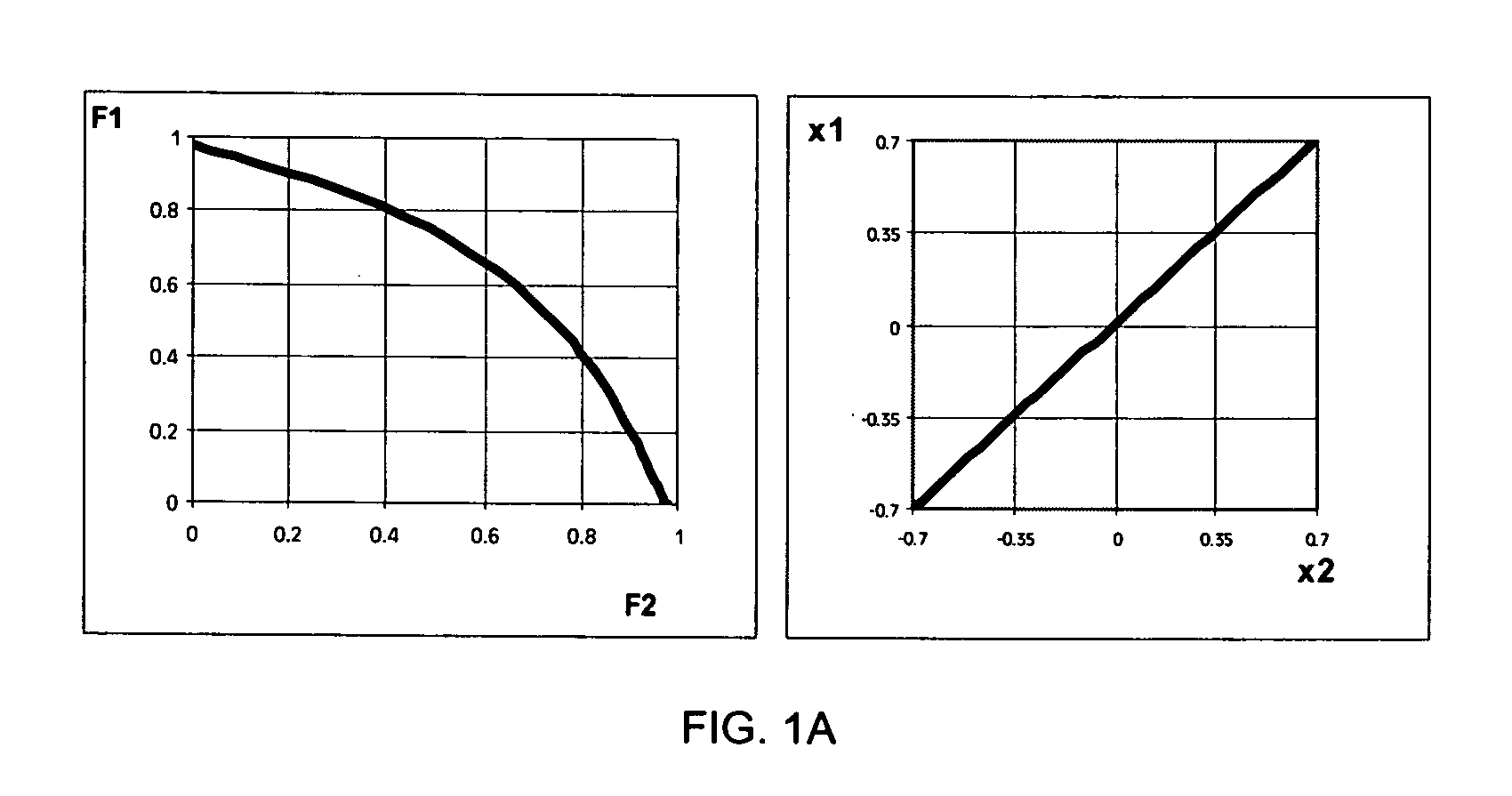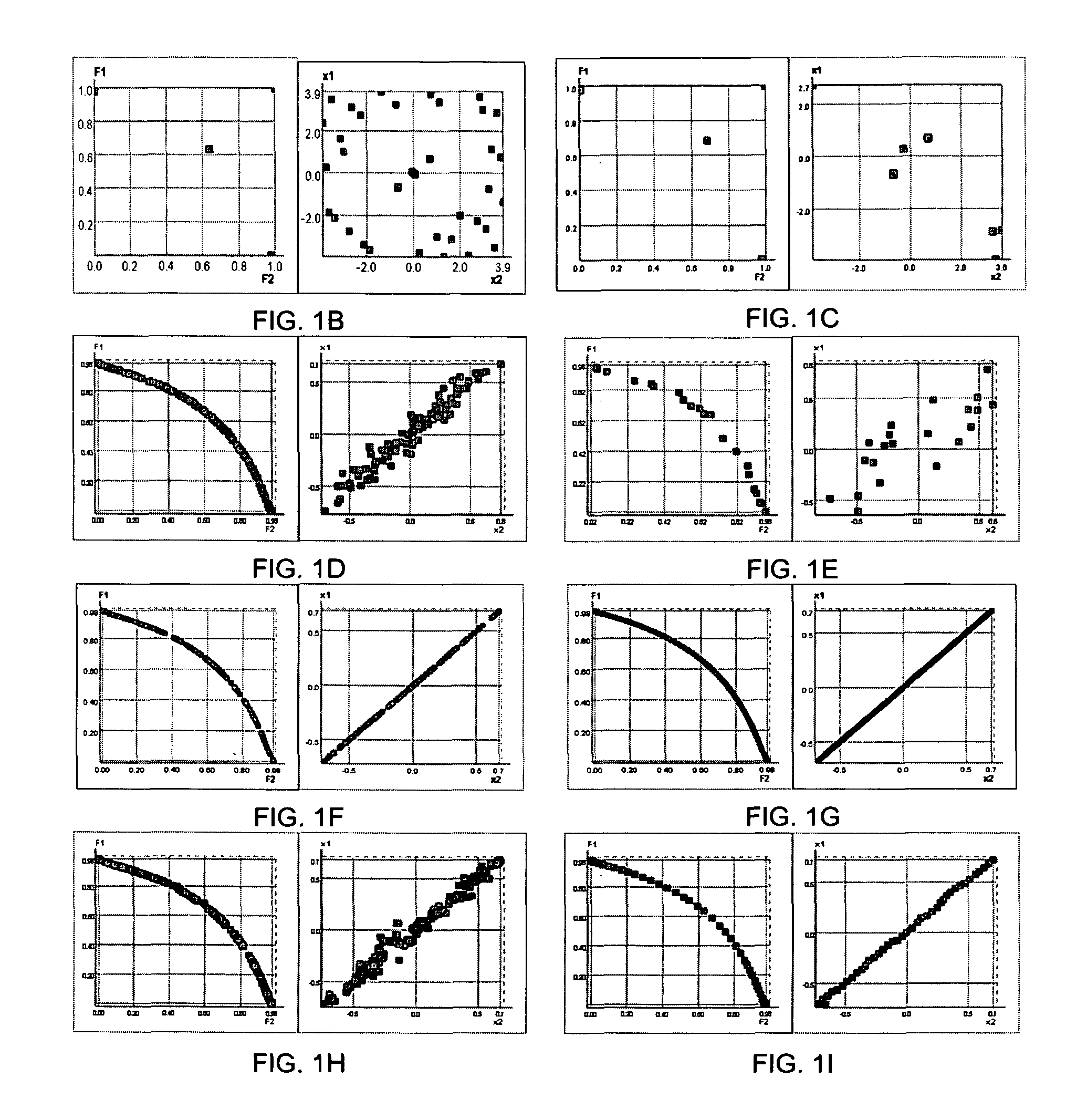Gradient based methods for multi-objective optimization
a multi-objective optimization and gradient technology, applied in the field of multi-objective optimization methods, can solve the problems of providing unparallel accuracy of found optimal solutions, and achieve the effect of eliminating or reducing the disadvantages of traditional multi-objective optimization tools
- Summary
- Abstract
- Description
- Claims
- Application Information
AI Technical Summary
Benefits of technology
Problems solved by technology
Method used
Image
Examples
Embodiment Construction
Concurrent Gradients Analysis for Point Improvement
[0117]CGA is a generalization of traditional gradient-based approach for multi-objective optimization, which can be used for solving optimization tasks in any engineering or scientific industry. CGA is the most efficient optimization approach for design of airplanes, automobiles, turbines, ships, etc.
[0118]Any traditional gradient-based optimization method comprises sequential steps from initial point to optimal point. Each step improves the current point with respect to the objective function. The most important element of such an algorithm is determination of the direction for the next step. Traditional gradient-based algorithms use the fact that the gradient of the objective function indicates the direction of the fastest increasing of the objective function (see FIG. 4A), but what if several objective functions need to be optimized?
[0119]The Concurrent Gradients Analysis method of the present invention determines the area of sim...
PUM
 Login to View More
Login to View More Abstract
Description
Claims
Application Information
 Login to View More
Login to View More - R&D
- Intellectual Property
- Life Sciences
- Materials
- Tech Scout
- Unparalleled Data Quality
- Higher Quality Content
- 60% Fewer Hallucinations
Browse by: Latest US Patents, China's latest patents, Technical Efficacy Thesaurus, Application Domain, Technology Topic, Popular Technical Reports.
© 2025 PatSnap. All rights reserved.Legal|Privacy policy|Modern Slavery Act Transparency Statement|Sitemap|About US| Contact US: help@patsnap.com



